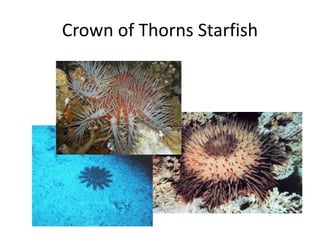The document discusses the phylum Cnidaria, which includes marine and freshwater organisms characterized by a diploblastic body structure and unique stinging cells called nematocysts. Cnidarians display polymorphism, with two main forms—polyps and medusae—each fulfilling different roles in the life cycle. The text further explores their feeding, reproduction, and the structure of classes such as Hydrozoa, Scyphozoa, and Anthozoa, emphasizing the ecological significance of coral reefs and their symbiotic relationships with algae.

























































































